Using: Frontend: Angular 14, API: .NET Core 5, c#, MVC IDS: .NET Core 5, c#, Razor as per ID standard
For my web app I have an instance of IdentityServer 4 running. This worked perfectly fine and without hick ups for about a year. Since recently when the app starts the login still works flawlessly and provides the token as per usual.
However, any API request thereafter return a 500 error, for about 1 minute or so, after which it works fine and without issue. Until the app is in 'rest' position (i.e. no active users) it starts of with the same error for the same amount of time.
I tried installing serilog to see if I can catch the error on the API side, to no avail. There are no errors in the logged serilog file. The only errors I can find are in the ASP.NET logs, which generally llok like the below;
fail: Microsoft.AspNetCore.Authentication.JwtBearer.JwtBearerHandler[3]
Exception occurred while processing message.
System.InvalidOperationException: IDX20803: Unable to obtain configuration from: 'https://<ids_server_url>/.well-known/openid-configuration'.
---> System.IO.IOException: IDX20804: Unable to retrieve document from: 'https://<ids_server_url>/.well-known/openid-configuration'.
---> System.Net.Http.HttpRequestException: Only one usage of each socket address (protocol/network address/port) is normally permitted. (<ids_server_url>:443)
---> System.Net.Sockets.SocketException (10048): Only one usage of each socket address (protocol/network address/port) is normally permitted.
at System.Net.Sockets.Socket.AwaitableSocketAsyncEventArgs.ThrowException(SocketError error, CancellationToken cancellationToken)
Nor can I catch the error on the IDS side, as that also seems to be working fine.
Accessing the .well-known/openid-configuration directly (i.e. from browser) gives a direct and correct response.
Several posts on SO indicated to add the below;
IdentityModelEventSource.ShowPII = true;
ServicePointManager.Expect100Continue = true;
ServicePointManager.SecurityProtocol =
SecurityProtocolType.Tls |
SecurityProtocolType.Tls11 |
SecurityProtocolType.Tls12;
// | SecurityProtocolType.Tls13;
This didn't seem to do anything at all to improve the error.
Would anybody be able to point me in the directions of any other possibilities? Especially the fact that it is only about a minute at the startup of the app seems to be weird?
I thought it might be the startup of IDS instance, but given that the actual login window repsonds directly and without delay, it implies that the IDS instance is active and running?
Any ideas would be helpfull?
update: 19/02/2023
With the help of @Tore Nestenius I have been able to add some logging to the initial process but the behaviour remains erratic and only on the deployed instance. (Likely because of app_pool shutting down)
Last night according to logger, after 6 failed attempts there was a succesfull query of the openid-configuration
JwtBearerBackChannelListener
@@@@ SendASync: https://<ids_server_url>/.well-known/openid-configuration
@@@@ success: True
@@@@ completed: True
@@@@ loadtime: 132
@@@@ url: https://<ids_server_url>/.well-known/openid-configuration
But... The subsequent process fails (again)
fail: Microsoft.AspNetCore.Authentication.JwtBearer.JwtBearerHandler[3]
What's more is that the initial call that the frontend makes is to a non-authorized endpoint (i.e. a public endpoint) there should not be a need for any token verification on that call?
If I query the backend on that endpoint directly from the browser it responds immediately, hence the backend appears to be working correctly? (i.e. api & database respond as expected when queried from the browser) yet in the API ASP logs it indicates a failed jwtHandler call? Weird...

